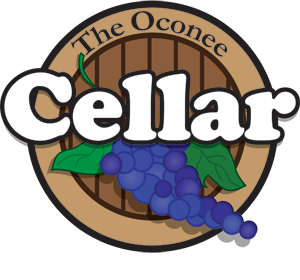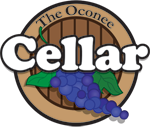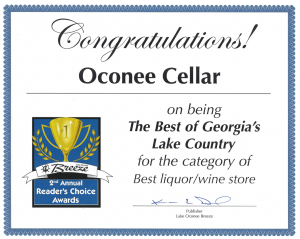October Wine Club Selections 2013
Yalumba The Strapper Grenache, Shiraz, & Mataro 2010 $19.99 91 Wine Spectator!
Yalumba was founded in 1849 by Samuel Smith, British migrant and English brewer, who had brought his family to Angaston seeking a new life. After purchasing a 30-acre parcel of land just beyond the southern-eastern boundary of Angaston, Smith and his son began planting the first vines by moonlight. Samuel named his patch “Yalumba” – aboriginal for “all the land around”.
Yalumba wines have a style all of their own and each have been influenced by a diverse range of elements. Elements Yalumba likes to call ‘the controllables’, such as the Yalumba Vine Nursery and on-site cooperage – as well as other factors that cannot be emulated by any other winery. Yalumba’s history and tradition combined with a reputation for innovation.
The three varieties are picked separately for this wine and fermented in small batches – some in oak vats and some in stainless steel. The subsequent wines are aged in a mixture of large oak vats, small oak vats, puncheons and smaller oak barrels, to allow the wines to develop without the influence of a lot of oak flavour, but to increase in textures and complexity. Parcels of Grenache, Shiraz and Mataro are chosen from Barossa vineyards that show vibrancy and depth of fruit.
The varieties G, S & M were created to go together, blending harmoniously in the bottle and glass. This is a wine that is layered and supple – like spiced red and black berry fruits, drizzled with chocolate. Finishing with rustic yet velvet tannins. Delicious with slow braised beef cheek or lamb shanks, garnished with crisp smoked Schultz’s bacon and served with roasted root vegetables.
Oxford Landing Estates Chardonnay 2011 $ 9.99
In 1958, South Australian entrepreneur and winemaking visionary Wyndham Hill Smith took a spade and sank it into the riverside dirt. He believed this place of fertile red soil and bountiful sunshine would be ideal for growing premium grape varieties, and Oxford Landing Estates was born.
With 650 acres under vine, they could never call Oxford Landing small but they act like they are. They micro-manage 130 five-acre blocks as separate ecosystems so we become intimately familiar with each block and can give the grapes exactly what they need to achieve optimum flavour. ‘Small vineyard’ techniques such as detailed pruning, canopy management and crop thinning give them ultimate control in expressing the individuality of each block. They are nimble enough to harvest small batches of the fruit as soon as it ripens, so not an ounce of freshness is lost.
The ‘small scale’ approach continues in the winery with methods usually reserved for boutique winemaking. These include using wild ferments native to the vineyard and back-blending with barrel-aged wines. Minimal handling of the juice also means less chance for error or contamination, so the fruit is processed gently yet quickly. Thinking small does make a lot more work for us, but we take pride in working hard to craft quality wine.
A tantalisingly creamy yet crisp, clean Chardonnay. Pale golden straw in colour with vibrant green hues, it has lifted aromas of freshly cut white peaches, citrus and honeydew melon. Underlying hints of nougat, nutmeg and cinnamon spice add complexity to the bouquet.
Kenwood Jack London Vineyard Cabernet 2010 $ 29.99 90 Rating Wine Enthusiast!
Ideally located in Sonoma Valley, Kenwood Vineyards – from its very first vintage – has been committed to producing premium varietal wines that reflect Sonoma County’s finest vineyards in their character and style. Kenwood Vineyards was founded in 1970 when wine enthusiasts from the San Francisco Bay Area refurbished and modernized the former Pagani Brothers Winery, originally established in 1906.
The winery produces classic varietal wines: Sauvignon Blanc, Pinot Gris, Chardonnay, Pinot Noir, Merlot, Zinfandel, Syrah and Cabernet Sauvignon and has earned the reputation of producing consistent, quality wines.
Cabernet Sauvignon thrives at Jack London Vineyards due to the optimum balance of warm morning sun and gentle cooling afternoon breezes, in combination with well-drained, deep, rich soils. The resulting wine from this Sonoma Valley appellation is rich and complex with aromas of boysenberry and fig combine with aromatic notes of cigar box, mint and a touch of vanilla. The wine has a rich, full-bodied mouthfeel with an excellent finish.
Kenwood Vineyards sits on a beautiful, twenty-two acre-producing estate. The winery also produces wines from fruit sourced from some of Sonoma County’s best vineyards. Using the “Cuvèe” winemaking method, the harvest from each vineyard is handled separately to preserve its individuality and true character. Such “small lot” winemaking allows our winemaker to bring each lot of wine to its fullest potential.
True to history, the winery is housed in the original winery buildings. Inside, the winery has been redesigned with winemaking versatility in mind. More than 125 stainless steel fermenting and upright oak tanks are used in combination with 14,000 French and American Oak barrels, giving the winemaker flexibility and diversity in production.
With hard work and dedication to quality, over the past forty years, this winery has earned a reputation for crafting wines that offer consistent high quality and outstanding value.
Domaine Laroche Chablis 2010 Saint Martin $ 24.99 89 Rating Robert Parker!
Cuvée Saint Martin is a blend of the best plots of Domaine Laroche in the Chablis appellation. All plots are located on Kimmeridgian soil with a west to northwest orientation. Thanks to the diverse nuances of these sources, they bring richness and complexity to the final cuvée.
Definition: Saint Martin, the patron saint of Chablis, was a Roman cavalry officer who converted to Christianity, lived as a humble monk and was elected Bishop of Tours. After his death in 397, his body was brought back to the Abbey of Marmoutier in Tours, where his relics (his famous cloak, in particular) were kept. In 877, as the Normans were invading the Touraine, monks took his relics to Chablis to avoid destruction. Saint Martin’s relics were kept for a decade in the Obédiencerie, the prayer hall in the ninth-century monastery in the town of Chablis.
Viticulture: Converting toward organic viticulture: 2010 is the first year of organic cultivation for these vineyards. Domaine Laroche will require four consecutive years of organic cultivation (one more year than EU regulations prescribe) before their viticulture will be considered 100% organic. Traditional Chablis pruning system with strict pruning and debudding. Trellising to aerate the canopy and leaf plucking to avoid compact canopy and avoid development of botrytis.
The qualities of the year come through beautifully in the 2010 Chablis Saint Martin. Layers of silky, polished fruit flow with gorgeous length and persistence. The 2010 is another overachiever among the entry-level wines of this great Chablis vintage. Anticipated maturity: 2012+.


